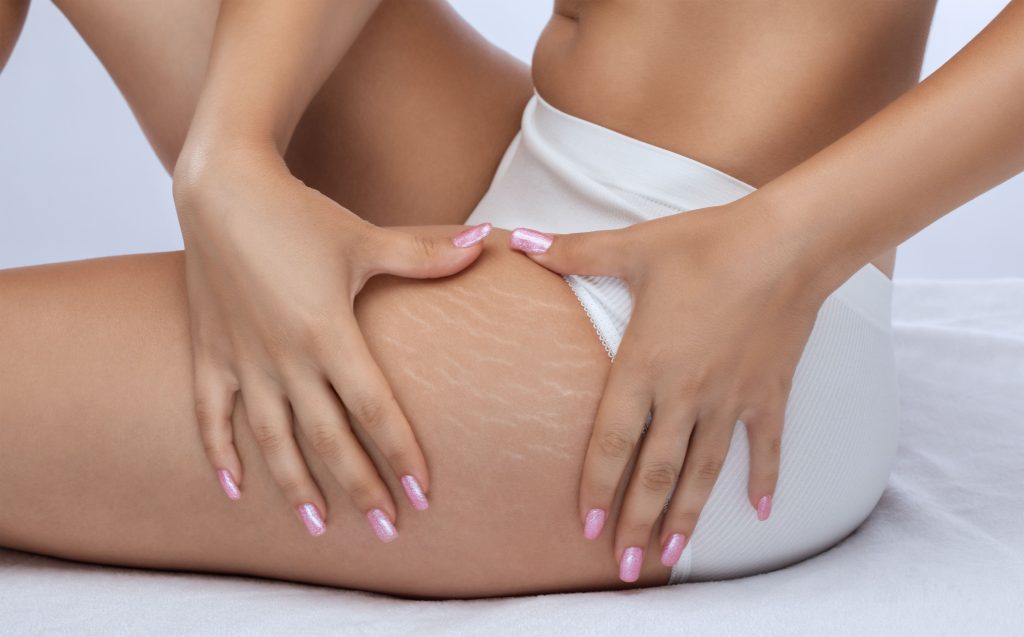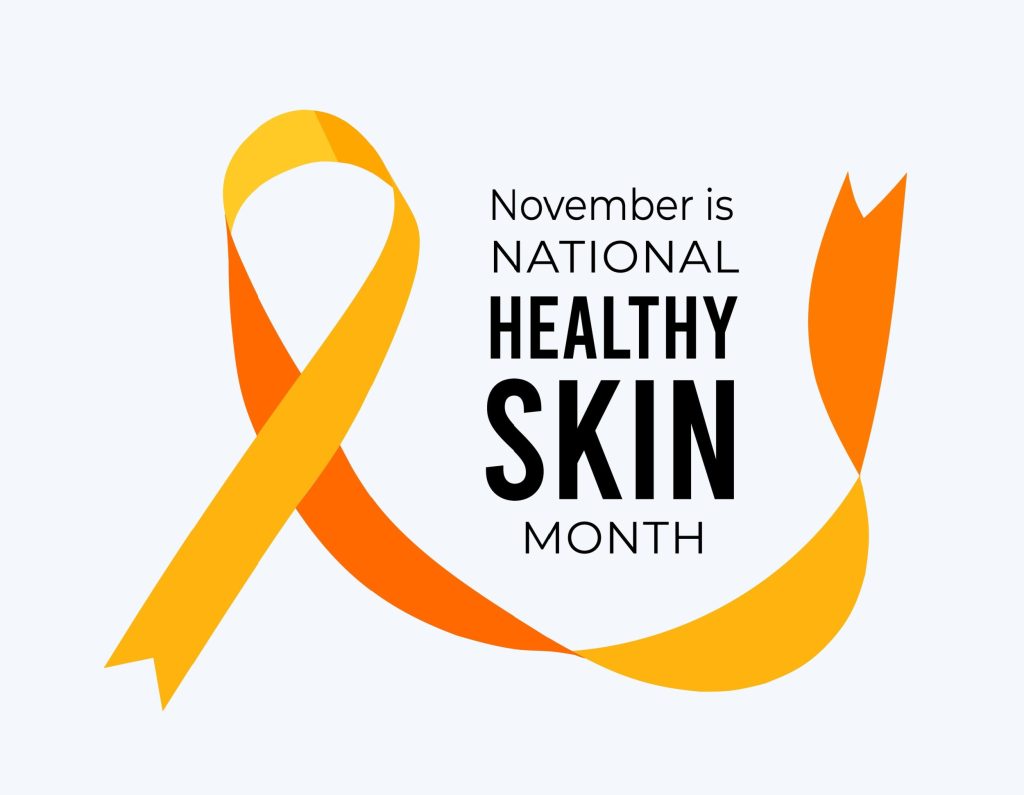
Stretch marks are common yet can often be misunderstood. These natural little lines tell a unique tale of your skin’s growth, change, and resilience. They are painless and medically harmless – but you may not appreciate the appearance of them on your body. Men, women, and children can all develop stretch marks, and it’s perfectly normal. Here’s what you need to know about stretch marks to maintain a positive outlook that comes with embracing the skin you’re in.
What Are Stretch Marks?
Stretch marks, scientifically known as striae, are lines or grooves that form when your skin is stretched too rapidly. Collagen and elastin – the proteins that give your skin its structure, flexibility, and elasticity – can rupture if your skin stretches or shrinks very quickly. Stretch marks occur in the middle layer of your skin (the dermis) where the connective tissues are located.
When they appear, stretch marks may look rippled, raised, or streaky. Early stretch marks can be pink, purple, red, reddish-brown, or dark brown. Over time, mature stretch marks will fade to become thin, silvery, or light-colored scars. They can develop anywhere, and most commonly form on the upper arms, shoulders, lower back, stomach, hips, buttocks, breasts, and thighs.
Who Develops Stretch Marks?
Anyone can develop stretch marks, but they are most common in women, especially women who are or who have been pregnant. Not only does pregnancy physically stretch a woman’s skin to make room for a baby, but pregnancy hormones may also weaken elastin fibers.
Another common time for stretch marks to form is for preteens during puberty. Stretch marks are a perfectly normal side effect of rapid growth spurts.
Other factors that contribute to stretch marks include:
- Rapid weight loss or weight gain
- Obesity
- Bodybuilding or strength training with muscle growth
- Long-term use of oral or topical corticosteroids
- Disorders like Cushing’s disease and Marfan syndrome
- Breast implant surgery
- Family history and genetics
- Hormones
Managing and Treating Stretch Marks
While not always preventable, certain practices can minimize the likelihood of developing stretch marks. Staying hydrated, maintaining a balanced diet, and gradually adjusting to weight changes can contribute to healthier skin.
Stretch marks are permanent scars. While they never entirely heal, the marks will become lighter, thinner, and less visible over time.
Many people try home remedies to reduce the appearance of stretch marks, but there is no conclusive evidence that any of these methods work better than others, or that any of them work at all. Common home remedies include oils (like almond or olive), cocoa butter, and vitamin E products. Sometimes stretch marks can become itchy, and cocoa butter may help soothe your skin in these instances.
There are over-the-counter creams and gels that may help reduce the appearance of early stretch marks. If you use cream or gel, massage it into your skin daily for several weeks – it may take time to see results. Some people use self-tanners or makeup to help hide visible stretch marks.
For those seeking more intensive solutions, dermatological procedures like laser therapy or microdermabrasion may be considered. These treatments aim to stimulate collagen production and reduce the visibility of stretch marks.
It’s important to bring up a hot topic surrounding stretch marks – tanning beds. Some people may believe that by getting a tan, they will eliminate or reduce the appearance of stretch marks. However, not only is indoor tanning extremely dangerous to the skin, but using a tanning bed does not get rid of stretch marks. Tanning beds emit concentrated UV radiation, which can damage the skin and increase the risk of skin cancer. Tanning beds are also associated with premature aging and other skin issues.
What Are the Dermatological Treatments Options?
Your dermatologist can help you treat stretch marks. Schedule an appointment if you have stretch marks covering a large amount of skin, at-home treatments have been ineffective, or if you feel self-conscious about the marks.
One dermatological treatment route is prescription medication. Medications with tretinoin or hyaluronic acid may be effective at reducing the appearance of stretch marks.
Other dermatological treatments include microdermabrasion, chemical peels, ultrasound therapy, radiofrequency treatment, and laser therapy. At Florida Dermatology Skin Cancer Centers, we offer laser resurfacing and Cynosure ICON TM laser treatments, which uses laser pulses to break down stretch marks and trigger new tissue production. The growth of new tissue can help reduce the appearance and color of stretch marks and improve their texture.
Embracing Your Skin’s Story
Instead of viewing stretch marks as imperfections, let’s celebrate them as a testament to the incredible capabilities of our bodies. Embracing self-love and body positivity can transform the way we perceive and appreciate our skin.
Ultimately, confidence comes from within. By understanding, managing, and embracing your stretch marks, you’re not just caring for your skin; you’re nurturing a positive relationship with yourself!
If you want more information on stretch marks and the best treatment options for you, contact Florida Dermatology Skin Cancer Centers today and schedule a consultation.
Contact FLDSCC for All Your Skin Care Needs
Florida Dermatology and Skin Cancer Centers provides a full spectrum of dermatology and skin care services, and its team of physicians, APRNs, and PAs are experts in diagnosing and treating skin cancers with the latest technological options. Medical Director, Dr. K. Wade Foster, is fellowship-trained in Mohs surgery, the most effective technique for most types of skin cancers, with minimal scarring or risk.
For more information about the services that Florida Dermatology and Skin Cancer Centers provides, or to make an appointment for a skin exam, visit www.fldscc.com or contact us at (855) FLD-SKIN.


